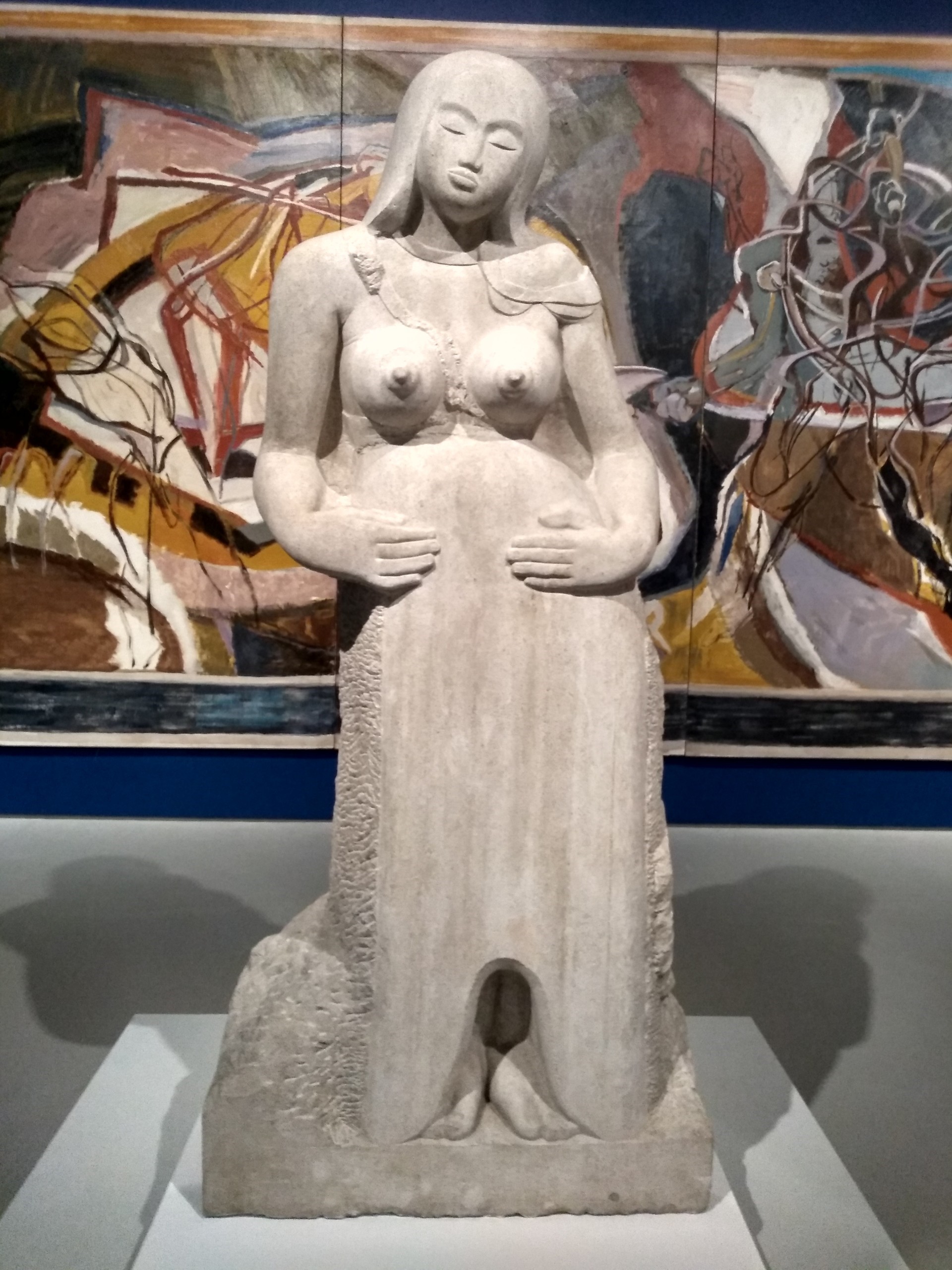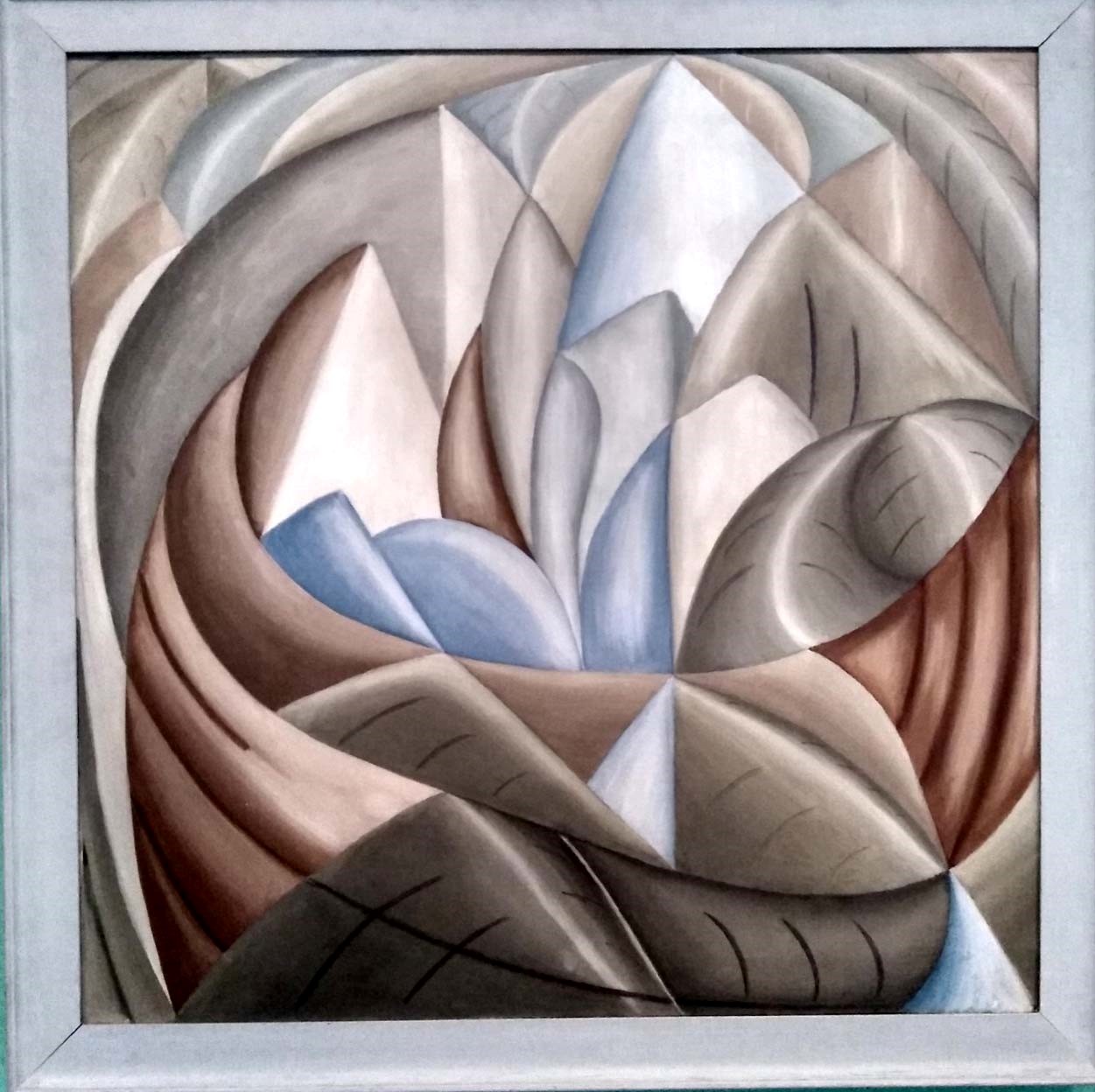By John Silverton 
Crying Girl (2023) by Jennifer Binnie (1958 –
From the mid-1950s, Towner Gallery was instrumental in bringing modernist and abstract art to Sussex. Despite a realization that opposition to abstract painting was somewhat endemic, William Gear, visionary Towner curator from 1958 – 1964, sought to put an end to the gallery’s provincial ‘pictures of Sussex’ notion of collecting. There was severe opposition; former curator Arthur Reeve-Fowkes associated abstraction with communism and as progressive works were acquired called Towner ‘a temple of anarchism.’
This superb exhibition at Towner tells the story and illustrates how modernism thrived in Sussex and the plethora of local artists who were involved combining traditional themes with unconventional ideas. Modernist movements in art were generally internationalist and sought to defy borders, looking down upon ‘provincialism.’ However, this exhibition depicts artists who supported a ‘new regionalism’ and, despite their abstract or modernist style, managed affiliations with local landscapes and crafts.
Day’s of Rest, Day’s of Work (1960) by Ivon Hitchens (1893-1979)
Ivon Hitchens moved to the Sussex countryside when his London house was bombed in 1940 and lived in a caravan in woodland near Petworth. His painting, Day’s of Rest, Day’s of Work, is an illustration of the concept of combining abstraction with an interpretation of the landscape, as well as depicting family life and husbandry of forestry.
Maternity (1911) by Jacob Epstein (1880 -1959)
The larger-than-life carved stone stature in front of Hitchin’s huge work is ‘Maternity’ by Jacob Epstein, carved from a seven-foot-high single block of stone. Epstein revolutionised British sculpture. He had the idea of making a modern version of Stonehenge on the South Downs comprising colossal figures carved from stone. An incredible vision that unfortunately never materialised.
Glacier Forms (1936) by Margaret Benecke (1876-1962)]
Margaret Benecke’s Glacier Forms is another example of cool abstraction combined with organic forms.
The exhibition runs until 28 September, tickets £9. However, on the first Friday of every month Towner are offering a ‘Pay what you can’ entry, (4th July, 1st August and 5th September), so you have no financial excuse not to enjoy this stunning exhibition.
